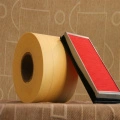Fuel Filter Paper: What’s Behind Cleaner, Drier, Longer-Lasting Fuel Systems
I’ve toured more than a few filter plants over the years, and the unsung hero is often the media itself. If you’re spec’ing fuel filter paper for OEM or aftermarket lines, the decisions you make at the media stage ripple through performance, warranty, and customer sentiment. In fact, a small tweak in resin or pore structure can swing water separation by double digits.

What’s trending (and why it matters)
Two macro shifts are reshaping fuel filter paper: higher injection pressures in modern diesel and the headache of variable fuels (ULSD, biodiesel blends, E10/E20). Actually, it’s not just about finer capture; it’s about stable hydrophobic/hydrophilic balance for water separation under shear. Many customers say they’ve seen better cold-start behavior after switching to a composite cellulose + melt‑blown media with tuned resins.

Core specs at a glance
Origin: Second Building and Studying No21 Shiji Street, Handan, Hebei, China.
| Material | Cellulose or composite with melt‑blown layer |
| Impregnation | Acrylic acid (non‑cured) / Phenolic resin (cured) |
| Width | 46 mm – 1650 mm |
| Nominal pore range | ≈7–25 μm (real‑world use may vary) |
| Efficiency (ISO 19438) | Up to ≥99% @ 10 μm, Beta10 ≥ 100 (typical) |
| Water separation | SAE J1488 Phase A/B: ≥95% with diesel, ≈90% with B20 |
| Corrugation/pleatability | Stable pleat geometry; low resin dusting |

How it’s made: a quick process walk‑through
– Fibers: selected cellulose blends; optional melt‑blown microfibers for fine capture.
– Resin systems: acrylic (flexible, non‑cured) or phenolic (rigid, cured) to tune wet strength and temperature resistance.
– Impregnation and drying: controlled pickup for basis weight and porosity targets.
– Corrugation/pleating: crease memory matters; I’ve seen pleats spring back if resin balance is off.
– Curing & slitting: tight tolerance slits from 46–1650 mm for different element formats.
– Testing: ISO 19438 efficiency, ISO 16332 fuel/water separation, burst and wet tensile, Gurley stiffness, basis weight, thickness, resin content.
Service life? For light‑duty diesel, around 10,000–30,000 km; for off‑road and gensets, it’s hours‑based and highly contamination‑dependent. To be honest, fuel housekeeping and tank hygiene often dominate outcomes.
Where it’s used
Automotive (gasoline/diesel), construction equipment, agricultural machinery, marine pre‑filters, portable generators, and small engines—anywhere fuel filter paper needs to capture fines and kick out emulsified water.

Vendor snapshot (what buyers compare)
| Vendor | Media Type | Widths | Resin | Lead Time | Notes |
|---|---|---|---|---|---|
| FiltersMaterial (Hebei) | Cellulose / composite | 46–1650 mm | Acrylic or phenolic | ≈2–4 weeks | Strong water separation focus |
| Vendor A | Cellulose | 100–1200 mm | Phenolic | 3–6 weeks | High stiffness grades |
| Vendor B | Composite | 50–1500 mm | Acrylic | ≈4 weeks | Cost‑optimized SKUs |
Customization, case notes, and certifications
Customization usually starts with target micron, water separation class, and pleat pack height. One fleet I spoke with moved to composite fuel filter paper and reported fewer injector return issues in winter; another marine distributor liked the stiffer phenolic grade for long pleats in tight bowls.
Common asks: IATF 16949/ISO 9001 process control, RoHS/REACH, fuel compatibility to ASTM D975 and EN 590. For ethanol blends, a slightly different resin balance helps keep coalescence stable—surprisingly, small tweaks go a long way.

Bottom line: if you need high efficiency, strong contaminant holding, and reliable fuel/water separation, composite fuel filter paper with tuned impregnation is a pragmatic, field‑proven choice.
References
- ISO 19438 — Fuel filters for diesel engines — Filtration performance test.
- ISO 16332 — Fuel filters — Method for evaluating fuel/water separation performance.
- SAE J1488 — Water separation test for fuel/water separators.
- ASTM D975 — Standard Specification for Diesel Fuel Oils.
- EN 590 — Automotive fuels — Diesel — Requirements and test methods.
Hebei Fangyu Filter Material Technology Co.,Ltd is the leading innovative developer and manufacturer all kinds of filter materials in China.pocket filter media factory Located in the economically developed Handan Hebei specialized in various kinds of filter materials from Synthetic Media,Paint stop Filter Media Pre- filter Non Woven Fabric ,Wire Mesh Backed Laminated Filter Media,Ceiling filter Auto Cabin Filter Media, polypropylene filter media, Glass Microfiber Filter Media Nonwoven Fabric,Pre- filter non woven fabric, activated carbon filter materials, EN779 bag filter materials, HEPA filter media, air filter HEPA filter media and Filter Accessories.Our filter materials have passed ISO9001:2000 quality certification since 2005.Certified by ISO9001, UL2 and SGS, with emphasis on quality and service. Our strength is the ability to find innovative ways to meet marketplace or product requirements.activated filter media price|super blog